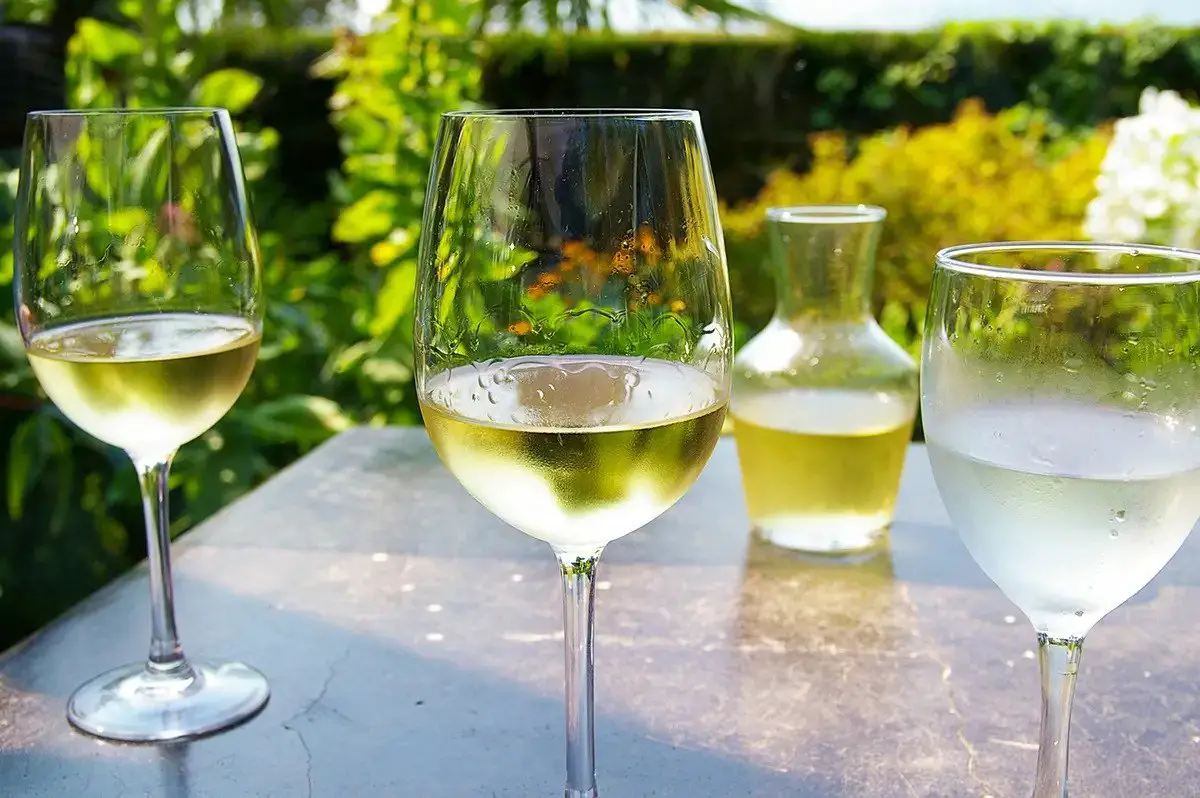Table of Contents
READ ALSO: On Choosing White Wine
Chardonnay vs Sauvignon Blanc/The Difference Between Chardonnay and Sauvignon Blanc/Sauvignon Blanc vs Chardonnay/Difference Between a Chardonnay and Sauvignon Blanc/Sauvignon vs Chardonnay
Chardonnay and Sauvignon Blanc are two popular white wine varietals that offer distinct flavor profiles and characteristics.
Here’s a comparison between Chardonnay and Sauvignon Blanc:
READ ALSO: Chardonnay vs Pinot Grigio: 2 Popular White Wines
Chardonnay
Chardonnay is one of the most widely planted and recognized white wine grapes worldwide.
It is known for its versatility, as it can be crafted into a range of styles, from crisp and unoaked to rich and buttery.
Here are some key features of Chardonnay:
- Flavor Profile: Chardonnay typically offers a range of flavors depending on the winemaking techniques employed. In cooler climates, Chardonnay tends to exhibit crisp acidity with flavors of green apple, citrus, and tropical fruits. In warmer climates and when aged in oak, it can develop flavors of ripe orchard fruits, vanilla, butter, and toast.
- Body: Chardonnay can have a medium to full body, with a smooth and sometimes creamy texture. Oak aging can contribute to a fuller-bodied style.
- Oak Aging: Chardonnay is often aged in oak barrels, which can impart flavors of vanilla, caramel, and spice. The level of oak influence varies, ranging from wines that showcase subtle oak nuances to those with pronounced oak characteristics.
- Food Pairing: Chardonnay’s versatility makes it suitable for a wide range of food pairings. Crisp, unoaked Chardonnays pair well with seafood, salads, and lighter dishes, while richer, oak-aged Chardonnays complement creamy pastas, roasted poultry, and seafood with butter-based sauces.
Sauvignon Blanc
Sauvignon Blanc is a refreshing and aromatic white wine that is grown in many wine regions around the world.
It is known for its vibrant acidity and distinct herbaceous and fruity characteristics.
Here are some key features of Sauvignon Blanc:
- Flavor Profile: Sauvignon Blanc typically exhibits intense aromas and flavors of citrus fruits (such as grapefruit and lime), green apple, tropical fruits, and sometimes herbaceous notes like grass, green bell pepper, and gooseberry. It is known for its bright, refreshing, and crisp profile.
- Acidity: Sauvignon Blanc is often high in acidity, which contributes to its zesty and refreshing character.
- Unoaked Style: Many Sauvignon Blancs are fermented and aged in stainless steel tanks or neutral vessels to preserve their vibrant fruit flavors and maintain a pure expression of the grape variety.
- Food Pairing: Sauvignon Blanc’s lively acidity and citrusy flavors make it an excellent accompaniment to a variety of dishes. It pairs well with seafood, salads, goat cheese, fresh vegetables, and lighter fare such as grilled chicken or fish.
To put the difference between chardonnay and sauvignon blanc side by side in a table:
| Chardonnay | Sauvignon Blanc | |
| Flavor Profile | Green apple, citrus, tropical fruits, vanilla, butter, toast | Citrus fruits, green apple, tropical fruits, herbaceous |
| Body | Medium to full body | Light to medium body |
| Oak Aging | Often aged in oak, varying levels of oak influence | Typically unoaked or neutral vessels |
| Acidity | Moderate to high acidity | High acidity |
| Aroma | Varies depending on style: crisp, oaky, fruity | Intense, vibrant, herbaceous |
| Food Pairing | Versatile: seafood, salads, poultry, creamy pastas | Seafood, salads, goat cheese, fresh vegetables, grilled fish |
Please note that this table provides a general overview of the characteristics of Chardonnay and Sauvignon Blanc, but individual wines may vary in their specific flavor profiles and styles.
Chablis vs Sauvignon Blanc
Chablis and Sauvignon Blanc are both popular white wines, but they differ in origin, flavor profile, and style:
Chablis
- Region: Burgundy, France (specifically the Chablis region)
- Grape: 100% Chardonnay
- Flavor Profile: Crisp, lean, and mineral-driven with notes of green apple, citrus, and flint. Some styles may have a hint of salinity.
- Oak Influence: Typically unoaked or lightly oaked, preserving its fresh and steely character.
- Acidity: High acidity, contributing to its bright and refreshing taste.
- Pairings: Shellfish, oysters, grilled fish, and light poultry dishes.
Sauvignon Blanc
- Regions: Loire Valley (France), Marlborough (New Zealand), California, and Chile.
- Grape: Sauvignon Blanc
- Flavor Profile: Vibrant and aromatic with notes of citrus (lime, grapefruit), green apple, passionfruit, and often herbaceous or grassy tones. Some may have flinty or smoky nuances.
Photo Credits: Total Wine & More, Saggittarius A, Wala
